|
Sergey Sivovolenko,
OctoNus
Yuri Shelementiev,
Moscow State University Gemological Center
Roman Serov, Moscow State University Gemological Center
- Computer modeling of gemstones
- Discussion
- Technology applications
- Conclusion
- Literature and data sources
Computer modeling of gemstones
There are many cases when a better cut can reveal a better color of a gemstone, and many cases when a gemstone's appearance has some flaws because of its cut. Unlike diamond, colored gemstones cutting allows for a lot more freedom. A cutter can choose among many shapes, facet patterns and proportion sets. The primary goal for a cutter is to achieve the best possible color and to reveal the potential of every piece of rough material. Because of the complicated nature of interaction between light and gemstone facets, every facet matters. Cutting mistakes can become evident only after the last facet is polished. Today many commercially available colored stones have various optical flaws in their appearance. That is why cutters are looking for a way to predict the optimal appearance of future gemstone's.
Recent advances in diamond scanning technologies have introduced computer 3d models of diamonds. There are Sarin, OGI, and OctoNus scanners commercially available. The same technology can be used for colored stones as well. Libraries of 3D cuts are available now on the Internet for free. Another type of 3D cuts is parametrical cuts that can be opened in software products such as DiamCalc by OctoNus or GemCad by Robert Strickland. These cuts are parametrical: they are symmetrical and determined by a set of parameters. Modern software products, for example DiamCalc, can model gemstones of a particular color if a user imports an absorption spectrum. This spectrum can easily be recorded with a conventional visible range spectrometer or obtained from an Internet database.
The described technology combines gemstones absorption spectra and 3D modeling for predicting the color appearance of gemstones before their cutting and polishing. A recorded spectrum should be adjusted in order to avoid all light losses and calculating an absorption coefficient, especially if this spectrum is not recorded through two parallel windows. To properly simulate a colored gemstone image on a computer screen a software product should model not only stone itself, but also illumination and should also take into account properties of human vision. Every cut can be characterized by its size, shape, facet arrangement, proportion set, and symmetry deviation. Every gemstone material is characterized not only its spectrum but also refraction indexes and dispersion that should be incorporated in the model. DiamCalc software creates rendered gemstones images by tracing all light beams that come from light sources through a gemstone to an observer's eye, and calculates the color of every virtual facet, dependant on the path of light rays and material absorption. Parametrical or scanned cuts can play the role of the gemstone.
The resulting images provide a lot of valuable information. Color appearance changes with size, shape, facet arrangement, cut proportions, distance, illumination, background, stone's position, and viewing conditions. On the Figure. 1 one can see pairs of DiamCalc images. In each pair the gem material is fixed, but one model in each pair is less attractive while the other has better look. The reasons are explained in captions and every example illustrates how to improve a gemstones appearance by computer modeling.
Figure 1. Pairs of gemstones DiamCalc models made on various gem materials. Scanned models are obtained with the Helium scanner.
A. Cut influences color. A yellow radiant cut diamond (right) has more intense color than a round cut diamond (left) with the same 8 mm size and the same spectrum.
Lighting conditions: Jewellery Store. | A light yellow natural diamond "Diamond yellow N3" spectrum obtained through 3.5 mm thick plate along an triad axis direction. This diamond is Ia type and its color is related with N3-N2 centres. |
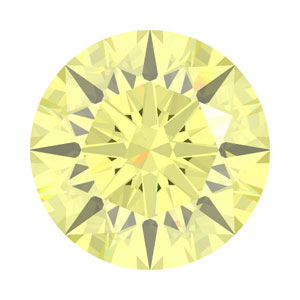 |
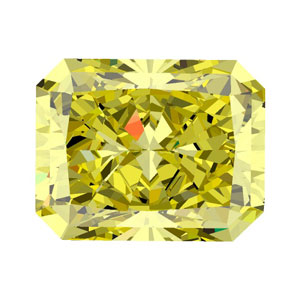 |
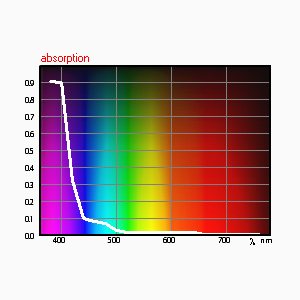 |
 Diamond_Yellow_round_MyJShop.dmc Diamond_Yellow_round_MyJShop.dmc |  Diamond_Yellow_radiant_MyJShop.dmc Diamond_Yellow_radiant_MyJShop.dmc |
 Diamond_yellow_N3.xls Diamond_yellow_N3.xls |
| |
| B. Windows (see through effect). The traditional oval cut (left) for this ruby model has a see through window in the center while the trillion cut (right) has bright red flashes in the central zone. Size of both stones is 7 mm, lighting conditions - Jewellery Store. |
"Corundum_Red_direction2" spectrum of a red synthetic corundum material obtained through the 11 mm thick plate with another arbitrary direction. Red color of that stone is related with Cr3+ adsorption features. |
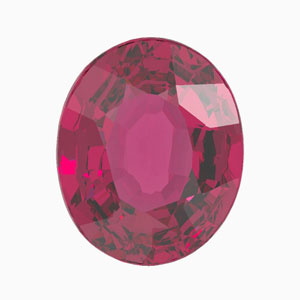 |
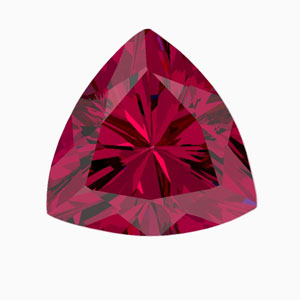 |
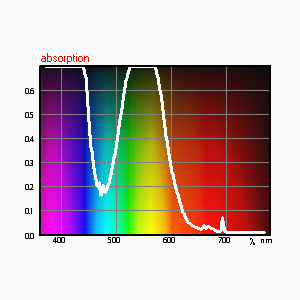 |
 Ruby_Oval_Tradit_paralC.dmc Ruby_Oval_Tradit_paralC.dmc |  Ruby_Trilliant_paralC.dmc Ruby_Trilliant_paralC.dmc |  Corundum_Red_direction2.xls Corundum_Red_direction2.xls |
| |
| C. Size does matter. These sapphire models are equal in all but size. The weight of the left stone is 0,50 ct while the weight if the right stone is 5,00 ct. Under this Jewellery Store lighting the right stone made of the same material appears too dark. | A blue natural sapphire "Sapphire" spectrum obtained from Mineral Spectroscopy Server visible spectra database* and then adjusted. Sapphire color is related with Ti-Fe presence |
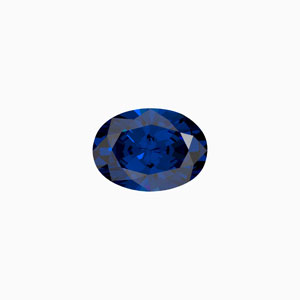 |
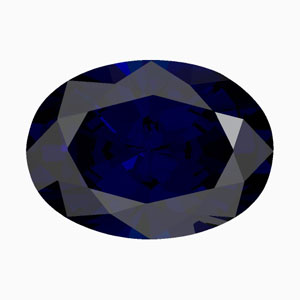 |
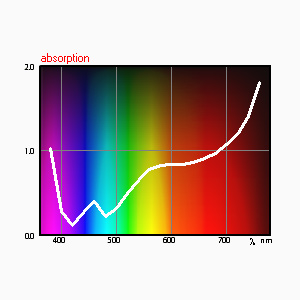 |
 Sapphire_oval_05ct.dmc Sapphire_oval_05ct.dmc |  Sapphire_oval_5ct.dmc Sapphire_oval_5ct.dmc |  Sapphire.xls Sapphire.xls |
| |
| D. Light leakage through pavilion. The orange background behind these 1,50 ct emerald models is visible through the emerald cut on left but less visible through the princess cut on the right picture. | A green natural emerald "Emerald" spectrum is one of DiamCalc standard spectra. Emerald color is related with Cr presence. |
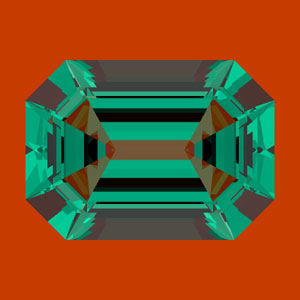 |
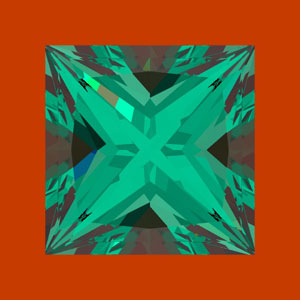 |
 |
 Emerald_emerald_orangeBG.dmc Emerald_emerald_orangeBG.dmc |  Emerald_princess_orangeBG.dmc Emerald_princess_orangeBG.dmc |  Emerald.xls Emerald.xls |
| |
| E. Black zones. Blue irradiated topaz trilliant shapes can reveal different appearance: the left model has black zones under the table while the right model has better look because of facet arrangement and proportions. Lighting conditions: Jewellery Store. The weight of each stone is 5 ct. |
A blue irradiated topaz "Topaz_paralC" spectrum obtained through 13 mm thick plate along parallel C-axis direction. |
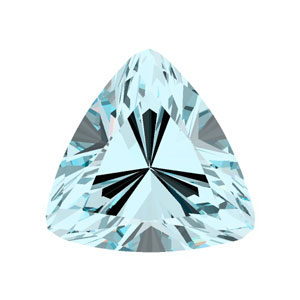 |
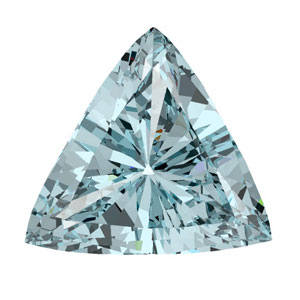 |
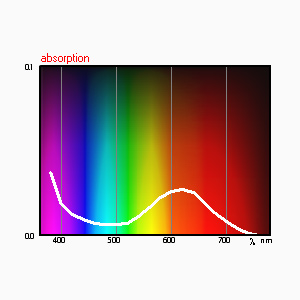 |
 Topaz_trilliant1_JShop.dmc Topaz_trilliant1_JShop.dmc |  Topaz_trillinant_My_Jewel_Store.dmc Topaz_trillinant_My_Jewel_Store.dmc |  Topaz_paralC.xls Topaz_paralC.xls |
| |
| F. Lighting creates a difference. This 0,72 ct scanned model of a princess cut synthetic diamond looks orange-yellow under Jewellery Store lighting (left) and much more brown under Office lighting conditions (right). | "Synthetic_diamond_Yellow" spectrum obtained through 5 mm thick plate. This diamond is Ib type and its color is related with C-centers absorption. |
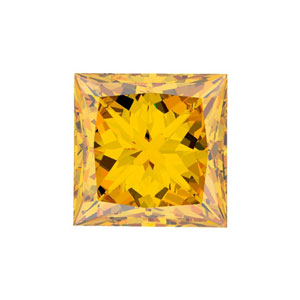 |
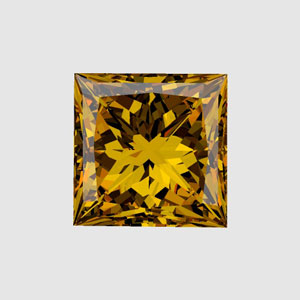 |
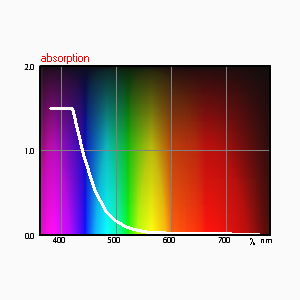 |
 Prince_Real_YSynthDiam_Jshop.dmc Prince_Real_YSynthDiam_Jshop.dmc |  Prince_Real_YSynthDiam_Of.dmc Prince_Real_YSynthDiam_Of.dmc |  Synthetic_diamond_Yellow.xls Synthetic_diamond_Yellow.xls |
| |
| G. Black zones in connection with light conditions. This 2,20 ct princess cut amethyst has a good color distribution in the Dialite lighting (left) but the color is better in Jewellery Store lighting (right) except for an un-attractive cross shaped dark zone in the center. | A moderate violet natural amethyst "Amethyst" spectrum obtained through 10 mm thick plate along an arbitrary direction. |
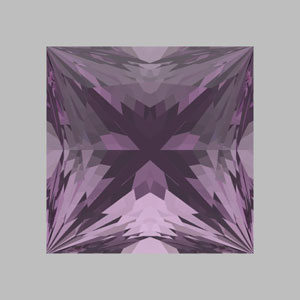 |
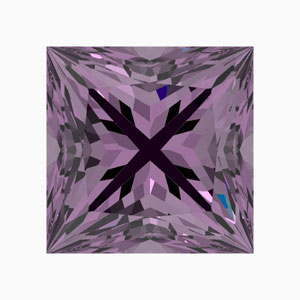 |
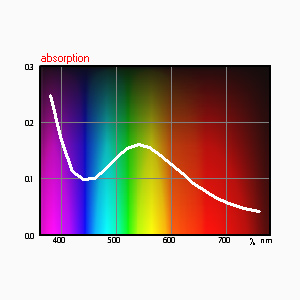 |
 amethist_princess_black_cross_Di.dmc amethist_princess_black_cross_Di.dmc |  amethist_princess_black_cross_JShop.dmc amethist_princess_black_cross_JShop.dmc |  Amethyst.xls Amethyst.xls |
| |
| H. Bow Tie effect. The oval cut yellow CZ has a distinct Bow Tie effect (left) while another oval cut with four pavilion main facets has avoided the bow tie and has better color distribution and more saturated overall color (right). The weight of each stone is 2,17 ct. | A yellow cubic zirconium (CZ) spectrum "CZ_yellow" obtained through 4 mm thick plate. Color of that stone is related with REE adsorption. |
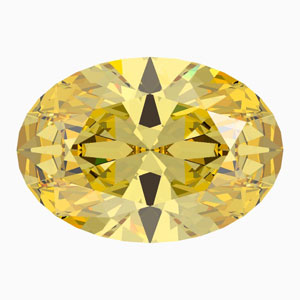 |
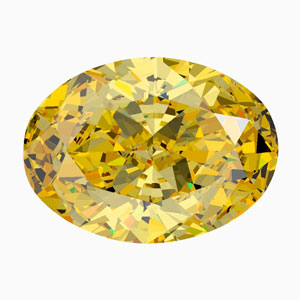 |
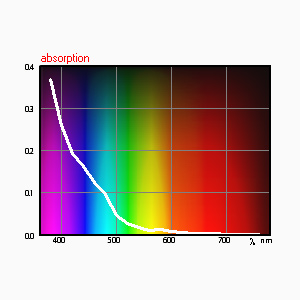 |
 CZ_Y002_Oval_Param.dmc CZ_Y002_Oval_Param.dmc |  CZ_Y002_Oval_wBT.dmc CZ_Y002_Oval_wBT.dmc |  CZ_yellow_Y002.xls CZ_yellow_Y002.xls |
|
Discussion
Method assumptions and limitations
- There are no standard of generally agreed lighting conditions for viewing gemstones and evaluating their color
- Limitation of the monitor's ability to simulate colors. RGB color space is only a part of locus and does not represent all possible colors. Gemstones can redirect into an eye much more light than a monitor screen
- Color distribution, that often appears in real stones, is not modeled yet
- Parametric cuts do not exactly represent actual cuts that quite often have various deviations of proportions, angles, and symmetry
- Dichroic or trichroic optical behavior of some gem materials is a challenge for computer modeling
Taking into account all limitations mentioned above it is important to verify the technology. Verification was done on relatively inexpensive materials: colored CZ, blue topaz and synthetic corundium. There is a very good matching of predicting models and resulting gemstones, being observed in the similar lighting conditions, if a cutter properly follows all cutting requirements.
Modeling of optical anisotrophic gems
Natural irradiated topaz absorbtion spectrum in two directions
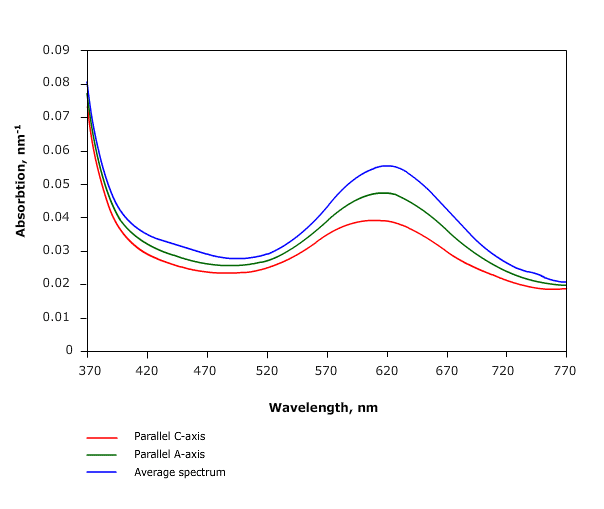
Modeling of pleochroic stones is approximated by averaging spectra obtained in different directions, because in polished stones light changes direction and most of light rays represent mixture of ordinary and extraordinary rays
Verification of the technology: CZ material
Real photos of CZ stones and photorealistic images based on Helium scanned 3d
Process flow: 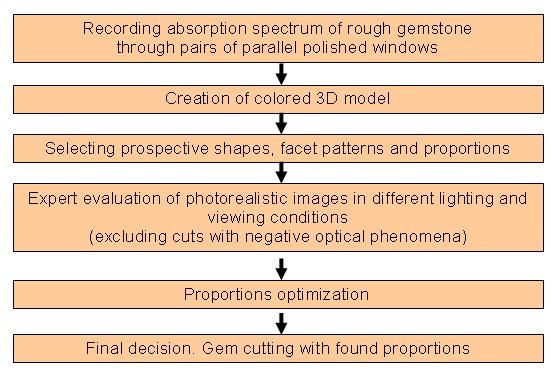
Technology applications
- A cutter can avoid undesirable optical effects
- All possible shapes, patterns and proportion sets can be considered, compared and analyzed at the planning stage
- A good cut that is found for one gem material, may be adjusted for others
- For a particular spectrum the best ranges of stones sizes can be calculated
- New cuts can be designed and checked without spoiling expensive gem material
- Modeling software can predict future color even at the rough stage
- All of this can also be used as a sales tool with a good level of color communication, including distant sales, connecting sellers and buyers all around the globe
Conclusion
- The method of gem cut optimization based on computer-modeling technologies can be applied in the cutting industry
- It allows achieving the best possible color and revealing the potential of every piece of rough material
- Negative optical phenomena in stones can be avoided with this technology
- New good cut designs can be developed
Literature and data sources
- Gem Cutting: A Lapidary's Manual (3rd edition). Sinkankas J. 1984.
Chapman & Hall
- Mineral Spectroscopy Server visible spectra database
- Color Science: Concepts and Methods, Quantitative Data and Formulae. Wiley-Interscience; 2nd edition. Wyszecki G., Stiles W. S. 2000
- Study of Interdependence:
Fancy-color Diamond Appearance, Cut, and Lighting Conditions. Sivovolenko S., Shelementiev Y. 2006
- Fancy-Color Diamonds: Better Color Appearance by Optimizing Cut. Sivovolenko S., Shelementiev Y. 2006
- DiamCalc software webpage
|




















